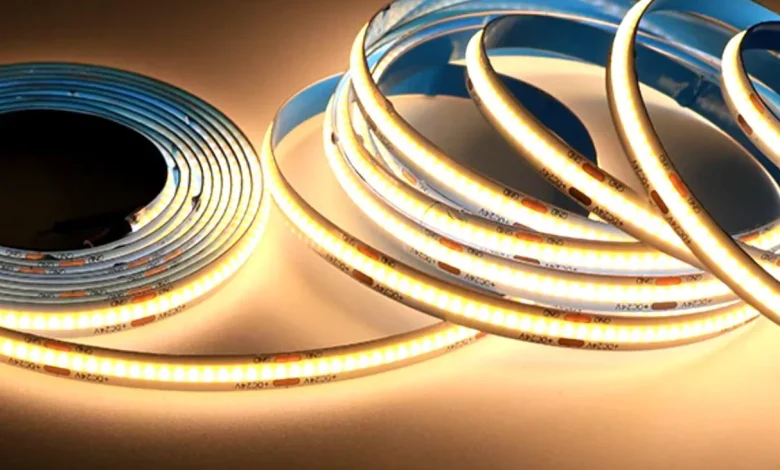Choosing the Right LED Strip Lights Supplier & LED Module Suppliers: An Essential Guide

LED lighting continues to reshape how we approach both architectural and signage illumination. Whether it’s creating mood lighting in a residential space or achieving vivid branding in commercial displays, LED strip lights and modules are key components. But with so many options in the market, selecting the right supplier can be just as important as choosing the product itself. This guide helps you understand what to look for when sourcing LED lighting with a focus on reliability, quality, and long-term performance.
Understanding What Makes a Supplier Reliable
A dependable supplier doesn’t just sell you a product; they deliver consistency and trust over time. Before considering any technical specs, it’s worth exploring whether the supplier holds certifications such as CE, RoHS, or FCC. These standards indicate compliance with safety and environmental guidelines.
Also important is whether the supplier handles their own manufacturing or outsources it. Factory-direct operations often allow for tighter quality control and more responsive production schedules. This can be especially helpful when your projects have tight timelines or custom needs.
Customization capabilities like LED density, waterproof ratings, and voltage options can also tell you a lot about a supplier’s ability to serve diverse projects.
What to Look for in LED Lighting Components
Whether you’re planning indoor ambient lighting or exterior signage, not all LED products perform equally. Strip lights, for example, vary in flexibility, brightness, and IP ratings. Modules, on the other hand, are designed for compact applications and precision lighting, such as illuminating channel letters or backlighting signs.
Some suppliers provide advanced customization, while others offer only stock configurations. Finding that flexibility can help you avoid compromise and ensure product compatibility with your electrical and structural setup.
Factors That Separate a Good LED Strip Lights Supplier
Midway through your research, it becomes clear that not all strip lights are created equal. A solid led strip lights supplier will go beyond bulk delivery; they’ll offer technical guidance, product warranties, and in some cases, integration support for smart control systems. When choosing, look into whether they offer options like high CRI (color rendering index), dimmable functionality, and thermally efficient designs. These specs are critical, especially when working on lighting layouts that require visual consistency across large areas.
Equally important is the quality of the materials used. The adhesive backing, for instance, should withstand heat and moisture over time without peeling or failing. Even something as simple as connector compatibility can affect the reliability of the installation.
Exploring Key Features in LED Module Systems
LED modules are the go-to choice for sign makers, architectural lighting designers, and display fabricators. The best led module suppliers typically offer a wide range of configurations, such as injection-molded housings, waterproofed designs, and high-lumen output suitable for outdoor use.
Depending on your application, you may require modules with a wide beam angle or specific cut lengths. Ask about voltage compatibility, power ratings, and chip brands. These technical specs can help prevent issues with brightness inconsistency or system overloads down the line.
Modules used for signage often need uniform light diffusion, especially in shallow channel letters or narrow casings. Better suppliers will have photometric data or test reports to verify light output uniformity, helping you avoid hot spots or dim zones in your displays.
Keeping Up with Innovation
The LED industry is constantly advancing. Today, you’ll find COB (chip-on-board) strips with higher density and improved heat management, and modules that can be synced with smart control hubs. Efficiency is also on the rise, with some models exceeding 200 lumens per watt.
New materials, such as thermally conductive silicone, are being used to improve durability without sacrificing flexibility. Sustainable manufacturing is also growing in importance, with some suppliers focusing on recyclable materials and lower-carbon production methods.
How to Evaluate and Compare Suppliers
It’s one thing to find a product that fits, but finding a supplier that supports you beyond the sale is a different story. Start by asking if they provide datasheets, installation guides, and test reports. Then inquire about lead times, packaging standards, and whether they offer OEM or ODM services.
Samples can be especially useful. Testing a few units in your actual application will reveal a lot more than spec sheets alone. You’ll get insight into brightness consistency, ease of installation, and build quality.
Technical support is often a deciding factor. A reliable supplier will help troubleshoot compatibility issues and suggest the right product for your environment. This kind of support can save you costly mistakes during installation.
Where These Products Fit in Real-World Applications
Strip lights and modules serve different roles but can often be used together. In residential projects, strip lights are used under cabinets, along stairs, and in ceiling coves for mood lighting. In retail, they enhance product displays or outline architectural features.
Modules, on the other hand, power bright, focused signage. They’re often hidden behind translucent panels or within channel letters to create uniform illumination. They also work well in outdoor displays where durability and weather resistance are critical.
Final Thoughts: Choosing Long-Term Quality Over Short-Term Convenience
When you take the time to evaluate a lighting supplier, not just their catalog you’re investing in the success of your project. Look for transparency, thorough documentation, and responsive communication. A supplier that values precision and reliability will usually reflect that in both their products and their service.
Whether you’re sourcing components for signage, interior design, or industrial applications, quality starts with the right questions and the right partners. It’s not about the cheapest option, but about the supplier who stands behind their light, long after it’s switched on.

